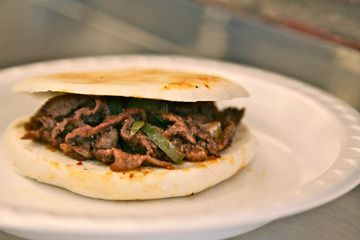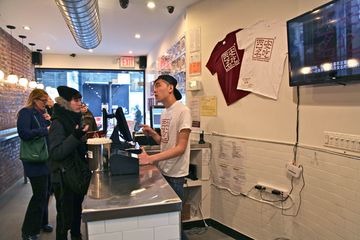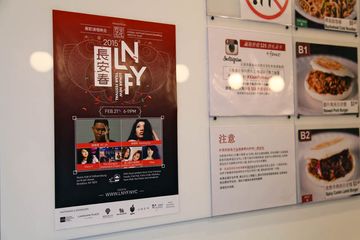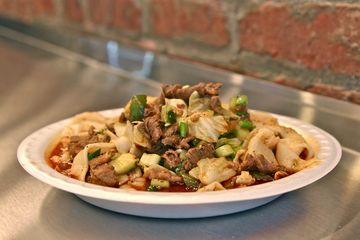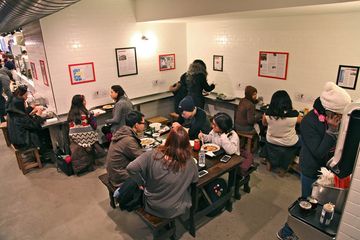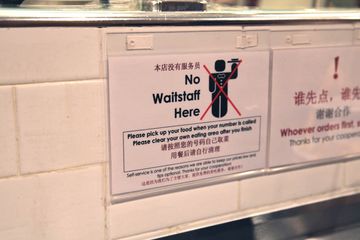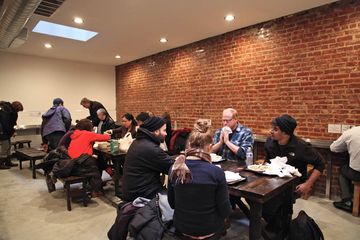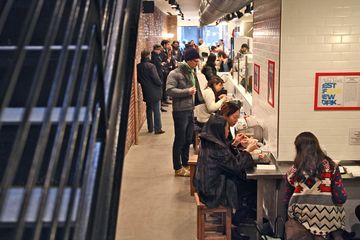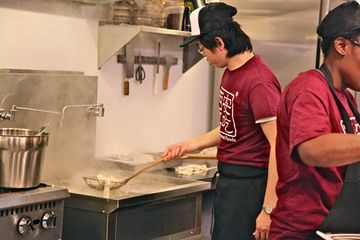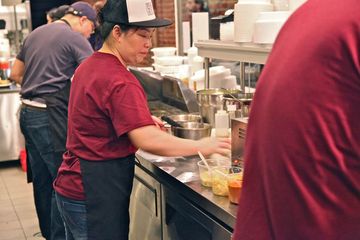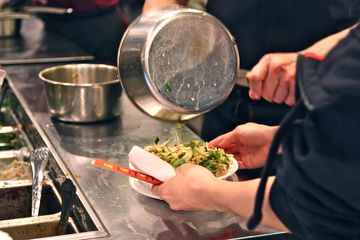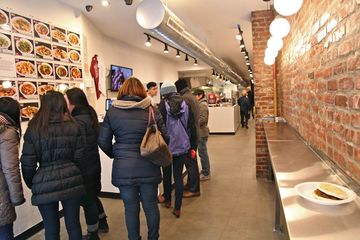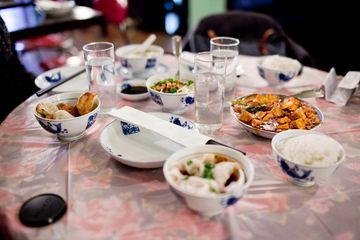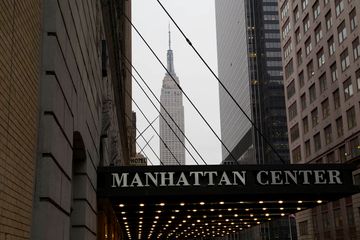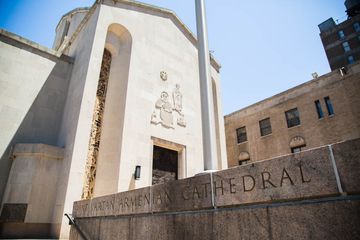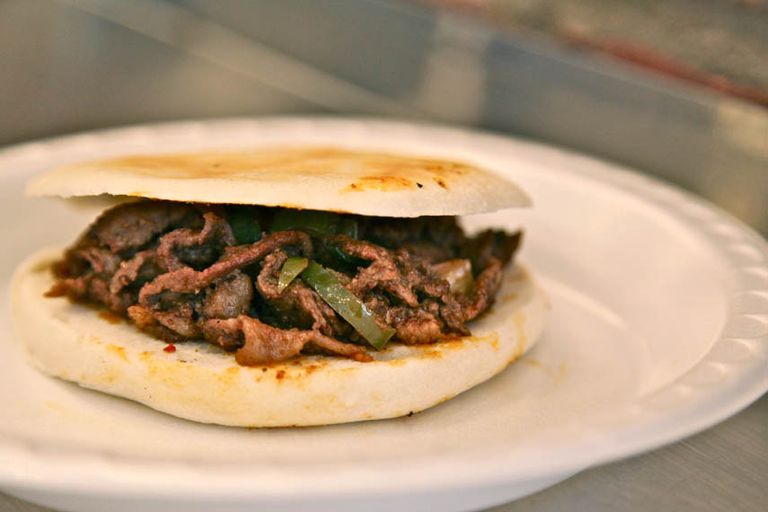
In 2008, chef and TV personality Anthony Bourdain visited Xi’an (pronounced “shee-yahn”) Famous Foods in a Flushing, Queens food court. The Chinese restaurant appeared on Bourdain’s show “No Reservation” and received rave reviews for its lamb burgers and hand-pulled noodles. From there, the basement noodle kitchen skyrocketed to fame and quickly established shops in Manhattan.
The 34th Street location is the tenth for Xi’an Famous Foods, having opened mid-January of 2015. When I stopped in one afternoon to meet the Xi’an office manager, Clare Xu, the line to order was wrapped around the storefront. Clare explained that this was usually the case. Despite the fact that the Midtown restaurant is the largest, with two levels of seating, all the corporate offices in the neighborhood provide a steady stream of clientele, both native Chinese and Westerners alike. With their workflow down to a science, Xi’an Famous Foods remains quick and efficient without compromising taste.
Just returning from a trip home to China, Clare advocated for the authenticity of Xi’an Famous Foods’s flavors. David Shi injected the family-run restaurant with recipes packed with bold, fragrant spices, reflecting cuisine from the Xi’an region of China. Clare explained how technically the seasonings used in the dishes – for example, the fiery cumin and chilies - are not native to China, but rather were introduced to the country centuries ago via the Silk Road, on which Xi’an was the point of embarkation.
To prevent Xi’an Famous’s exotic appearance from scaring away peoples of other cultures, Jason Wang, present day CEO, son of the founder, and head of restaurant operations, left his corporate business career to help boost his father’s chain by bringing a youthful vision to the table. Keeping the atmosphere casual by playing hip-hop music throughout the small shops, displaying modern minimalist décor, and implementing a no-wait staff policy, Jason transformed Xi’an Famous Foods into a warm, relaxed, and accessible eatery for a diversity of patrons.
The restaurant certainly showcased the uniqueness of Manhattan’s population, as people of all backgrounds sat together to enjoy their zesty lunches. N1, the spicy cumin lamb noodles in chili oil sauce, was a definite top seller, while B2, the spicy cumin lamb burger on house-made toasted bread, was another popular menu item. According to Clare, these days restaurant founder David Shi mainly oversees the Greenpoint factory where dough for the noodles is mixed and the meats are prepared. That way, he can ensure that all ingredients will create the best product when cooked and served on location.
Clare detailed how Xi’an Famous Foods looks to share their Chinese culture beyond the dining room through music. For instance, they teamed up with a few other Chinese restaurants in the city for a concert at the Music Hall of Williamsburg, where a number of big-name international musicians performed to celebrate the Chinese Lunar New Year. Food is a great place to begin in increasing one’s understanding of another culture, and in that way, Xi’an is acquainting thousands of visitors with China each year.
(To appreciate the food of the Xi’an region while avoiding the queue, check Xi’an Famous Foods’s “real-time store traffic meter” online before visiting the shops.)
